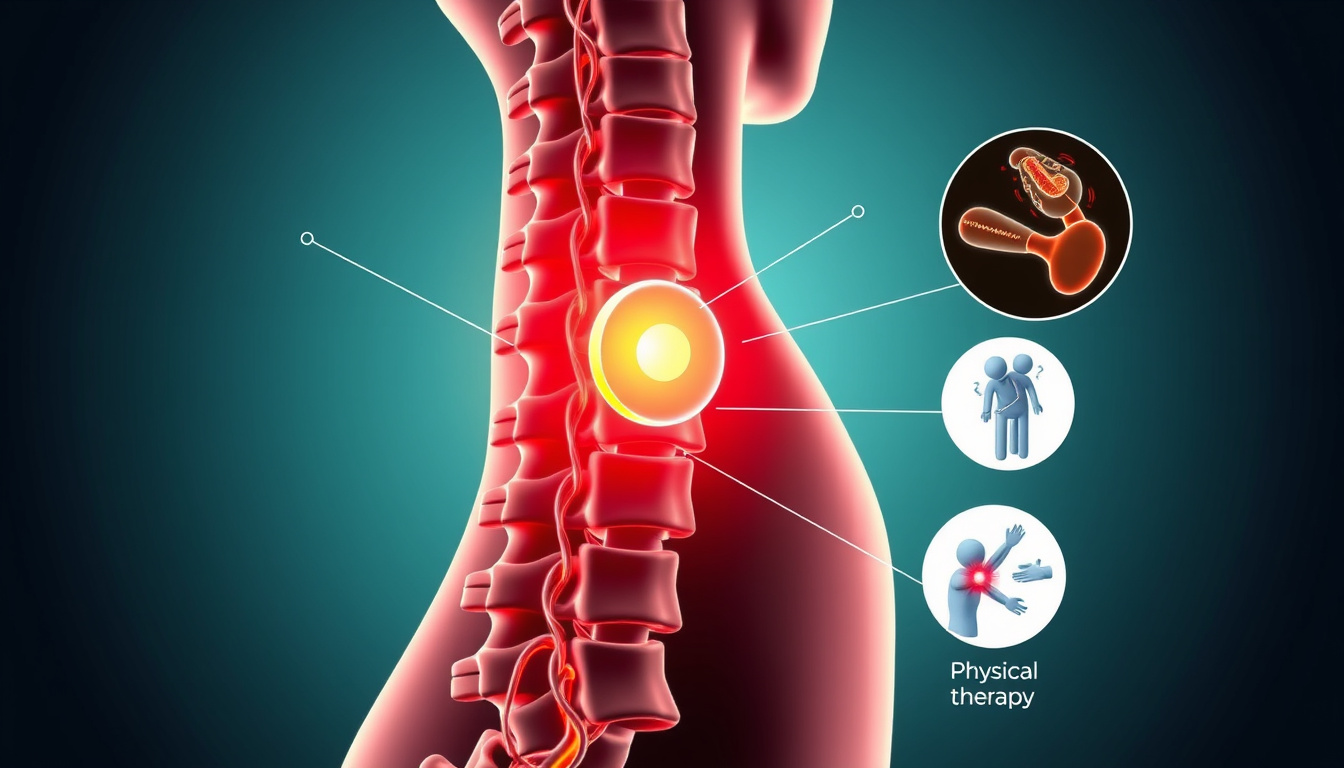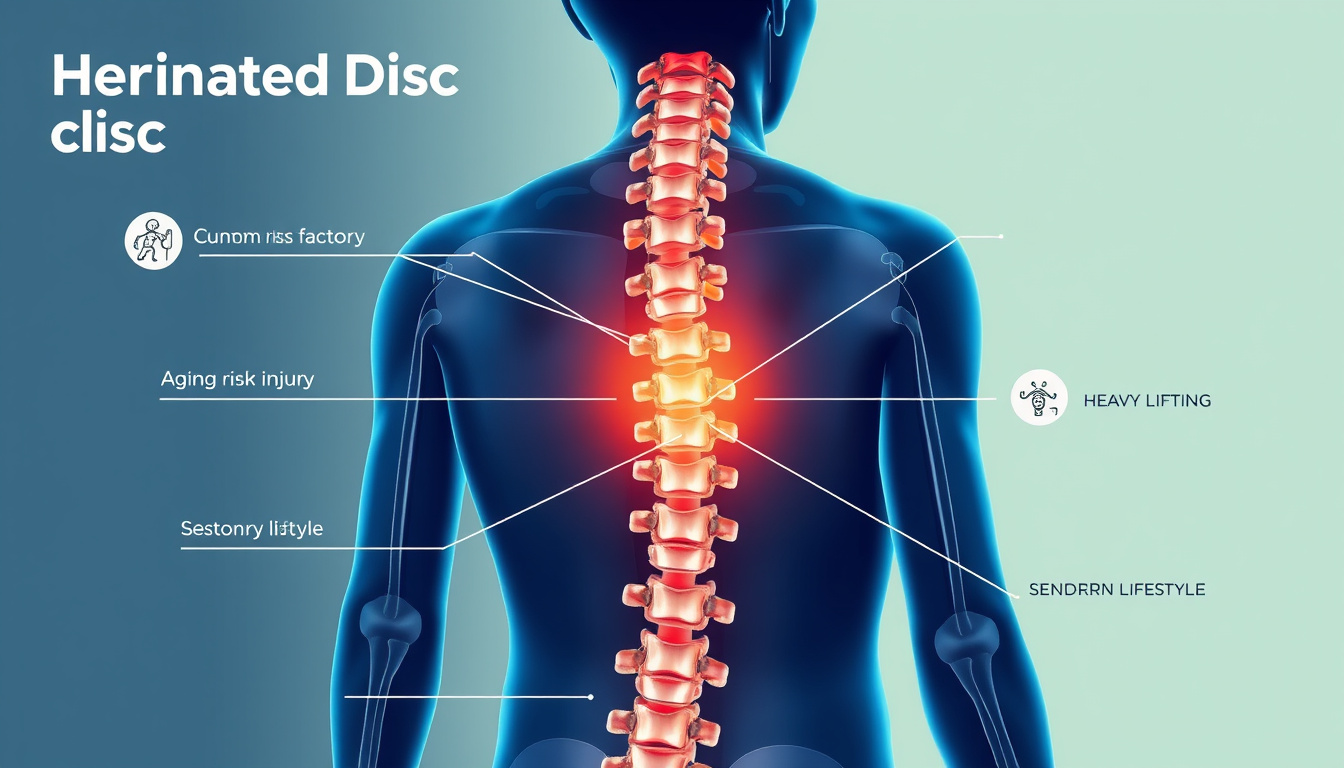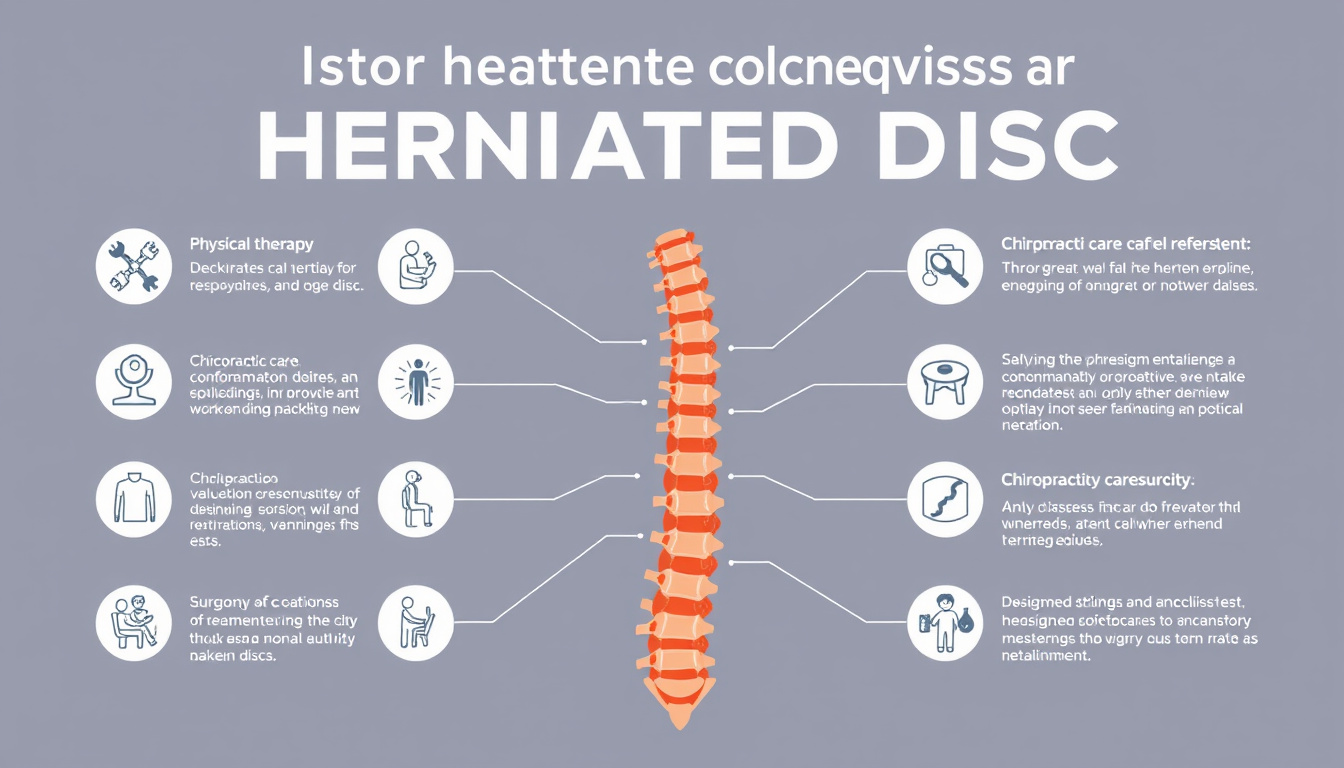
28 Mar Understanding Herniated Discs: Symptoms, Causes, and Effective Treatments
Herniated discs are a common yet often misunderstood condition affecting millions of individuals worldwide. As one of the leading causes of back pain and discomfort, it’s crucial to have a clear understanding of what herniated discs are, the symptoms they can present, their causes, and effective treatment options available. In this article, we will delve into the various aspects of herniated discs, providing insights that can help you manage your health and well-being effectively.

Key Takeaways
- Herniated discs occur when the soft center of a spinal disc pushes through a tear in the tougher exterior.
- Common symptoms include pain, numbness, and weakness in the affected area, often radiating to other parts of the body.
- Risk factors for herniated discs include age, genetics, obesity, and occupations that require heavy lifting.
- Diagnosis typically involves a physical exam and imaging tests such as MRI or CT scans to confirm the presence of a herniated disc.
- Effective treatments range from physical therapy and medication to surgical interventions for severe cases, with preventive measures focusing on maintaining a healthy spine.
What are Herniated Discs?
Herniated discs, often referred to as slipped or ruptured discs, occur when the soft, gel-like center of a spinal disc protrudes through a tear in the tougher exterior. This condition can lead to significant pain, nerve compression, and discomfort. The discs in our spine serve as cushions between the vertebrae, helping to absorb shock and maintain flexibility. When these discs become damaged, whether due to injury, aging, or wear and tear, the inner material can bulge out of place. This process can put pressure on nearby nerves, resulting in symptoms such as numbness, weakness, and pain that may radiate to different parts of the body. Understanding herniated discs and their implications is essential for anyone experiencing unexplained back pain or discomfort, as early diagnosis and treatment can significantly improve outcomes.
Common Symptoms of Herniated Discs
Herniated discs, also known as slipped or ruptured discs, can lead to a variety of uncomfortable and even debilitating symptoms that vary depending on the location and severity of the herniation. Common symptoms of herniated discs include back pain, which can be sharp or aching and may worsen with movement or prolonged sitting. Additionally, many individuals report radiating pain into the arms or legs, known as radiculopathy, caused by nerve compression due to the herniation. Tingling or numbness in the affected areas, accompanied by muscle weakness, are also prevalent symptoms that should not be ignored. In severe cases, individuals may face difficulty with coordination or bladder and bowel control, necessitating immediate medical attention. Understanding these common symptoms of herniated discs is crucial for early diagnosis and effective treatment.
‘The only way to deal with back pain is to make sure your spine remains healthy and strong.’ – Unknown

Causes and Risk Factors of Herniated Discs
Herniated discs are a common issue that affects many individuals and can lead to significant pain and discomfort. Understanding the causes and risk factors of herniated discs is essential for prevention and effective management. One of the primary causes of herniated discs is age-related degeneration of the intervertebral discs, which naturally lose hydration and elasticity over time, making them more susceptible to bulging or rupture. Additionally, activities that involve heavy lifting, twisting motions, or sudden movements can increase the likelihood of a herniated disc. Poor posture, lack of regular exercise, and obesity are also significant risk factors. Individuals with sedentary lifestyles may be particularly vulnerable, as weak muscles fail to support the spine adequately. Genetic predisposition can play a role as well; if there is a family history of spinal issues, the risk of developing herniated discs increases. By being aware of these causes and risk factors, individuals can take proactive steps to maintain spinal health.
Diagnosis of Herniated Discs: What to Expect
When it comes to the diagnosis of herniated discs, the process can seem daunting, but understanding what to expect can alleviate some of your concerns. Initially, your healthcare provider will conduct a thorough medical history review, coupled with a physical examination. During this assessment, they will evaluate your symptoms, which may include back pain, leg pain, or numbness and weakness in the extremities—common indicators of herniated discs. If these symptoms align with those associated with or herniated discs, further diagnostic imaging may be recommended. This typically includes a Magnetic Resonance Imaging (MRI) scan or a Computed Tomography (CT) scan, which provide a detailed view of the spine and confirm the presence of a herniated disc. Once diagnosed, your healthcare provider can suggest an appropriate treatment plan tailored to your specific situation, ensuring you receive the best possible care.

Effective Treatment Options for Herniated Discs
When it comes to managing or herniated discs, understanding effective treatment options becomes crucial for relief and recovery. Herniated discs, often referred to as slipped or ruptured discs, occur when the soft cushion of cartilage between the vertebrae in your spine pushes out through a tear in the tougher exterior. Symptoms can include pain, numbness, and weakness, depending on the location of the herniation and whether it compresses nearby nerves. Treatment options typically start with conservative measures such as physical therapy, pain management techniques, and anti-inflammatory medications. If these methods do not yield satisfactory results, more advanced interventions like steroid injections or, in severe cases, surgery may be considered. Engaging in regular low-impact exercise, maintaining good posture, and incorporating ergonomic supports can also play a significant role in preventing further injury and managing symptoms effectively. It’s essential to consult with a healthcare professional to tailor a treatment plan that best addresses your specific needs.
Preventing Herniated Discs: Tips for a Healthy Spine
Maintaining a healthy spine is essential in preventing conditions such as herniated discs, which can lead to significant discomfort and mobility issues. One of the most effective ways to protect your spine is by practicing proper posture, whether you are sitting at a desk or lifting heavy objects. Additionally, engaging in regular exercise can strengthen the muscles that support your spine, making it more resilient to strain. Activities such as yoga and Pilates are particularly beneficial for improving flexibility and core strength. It’s also important to avoid prolonged periods of inactivity, as being sedentary can weaken spinal structures over time. Incorporating ergonomic furniture in your workspace can further reduce the risk of improper body mechanics, thus lowering the chances of developing conditions like herniated discs. Lastly, staying hydrated and maintaining a healthy weight can contribute to overall spinal health, minimizing the stress placed on the vertebral discs. By following these simple yet effective tips, you can significantly reduce your risk of experiencing the painful effects of herniated discs.

Sorry, the comment form is closed at this time.